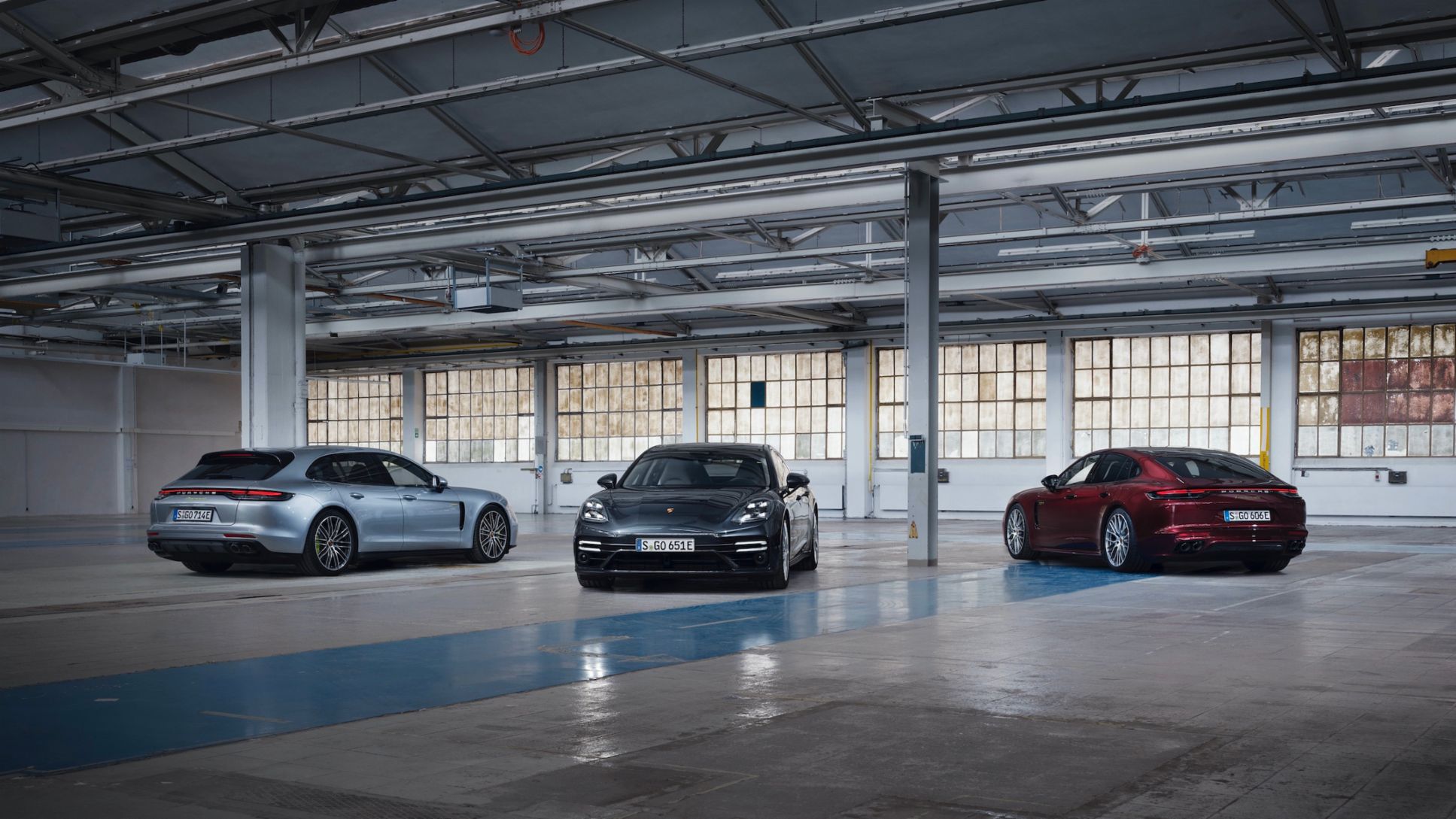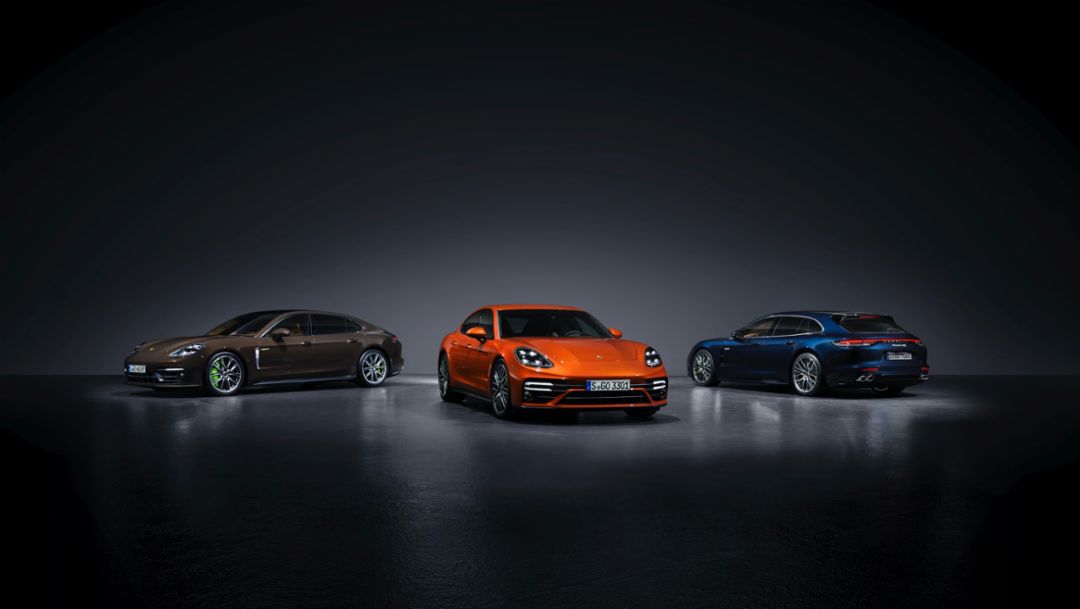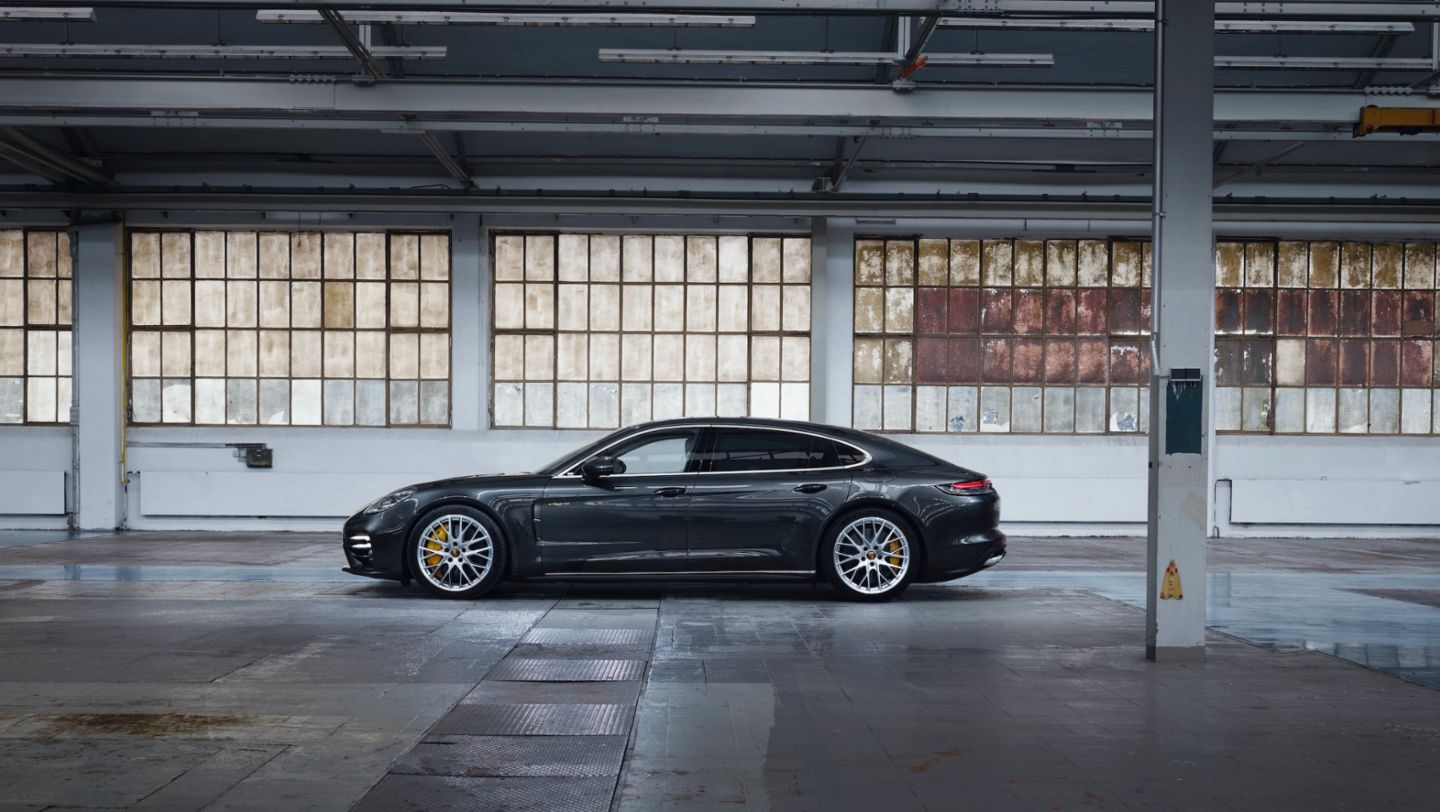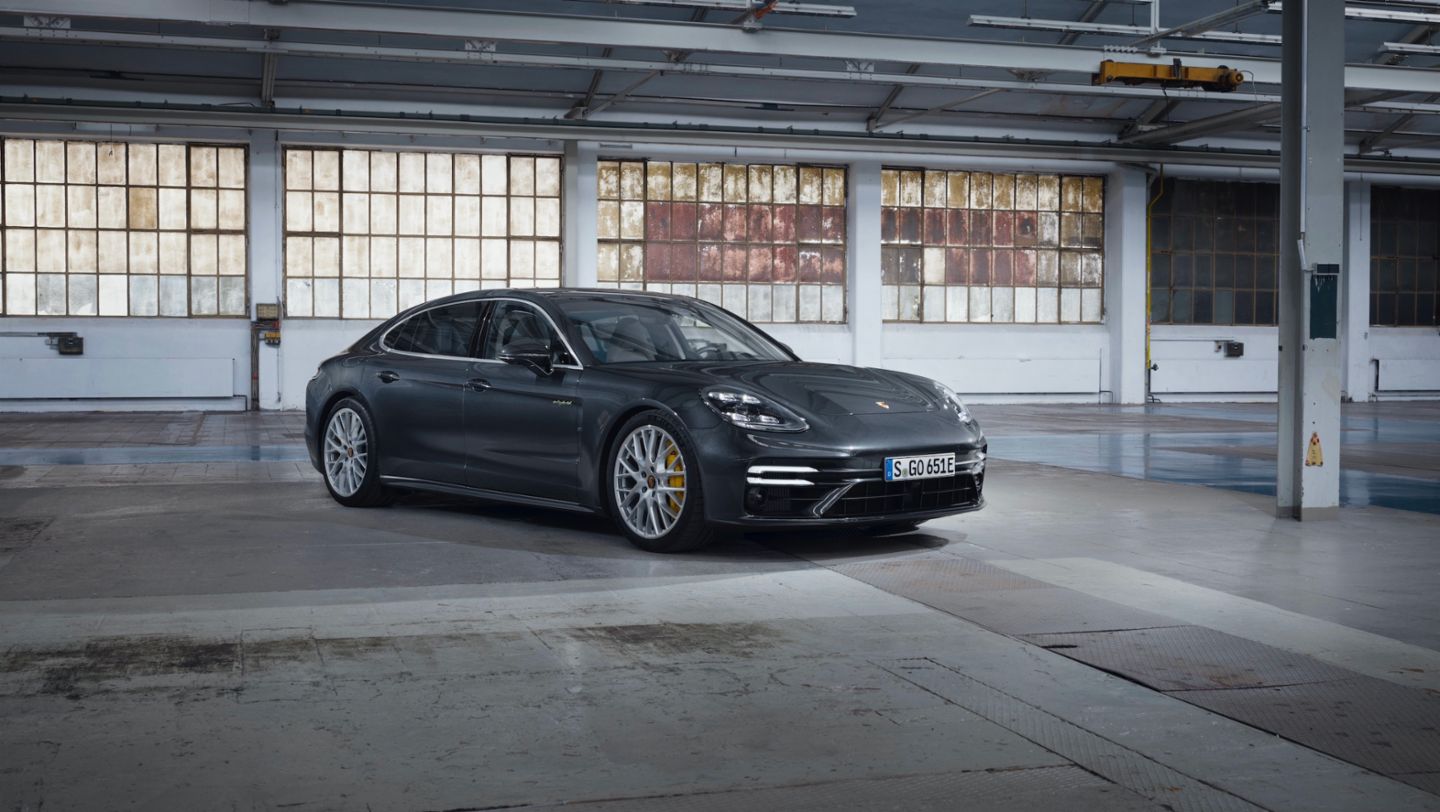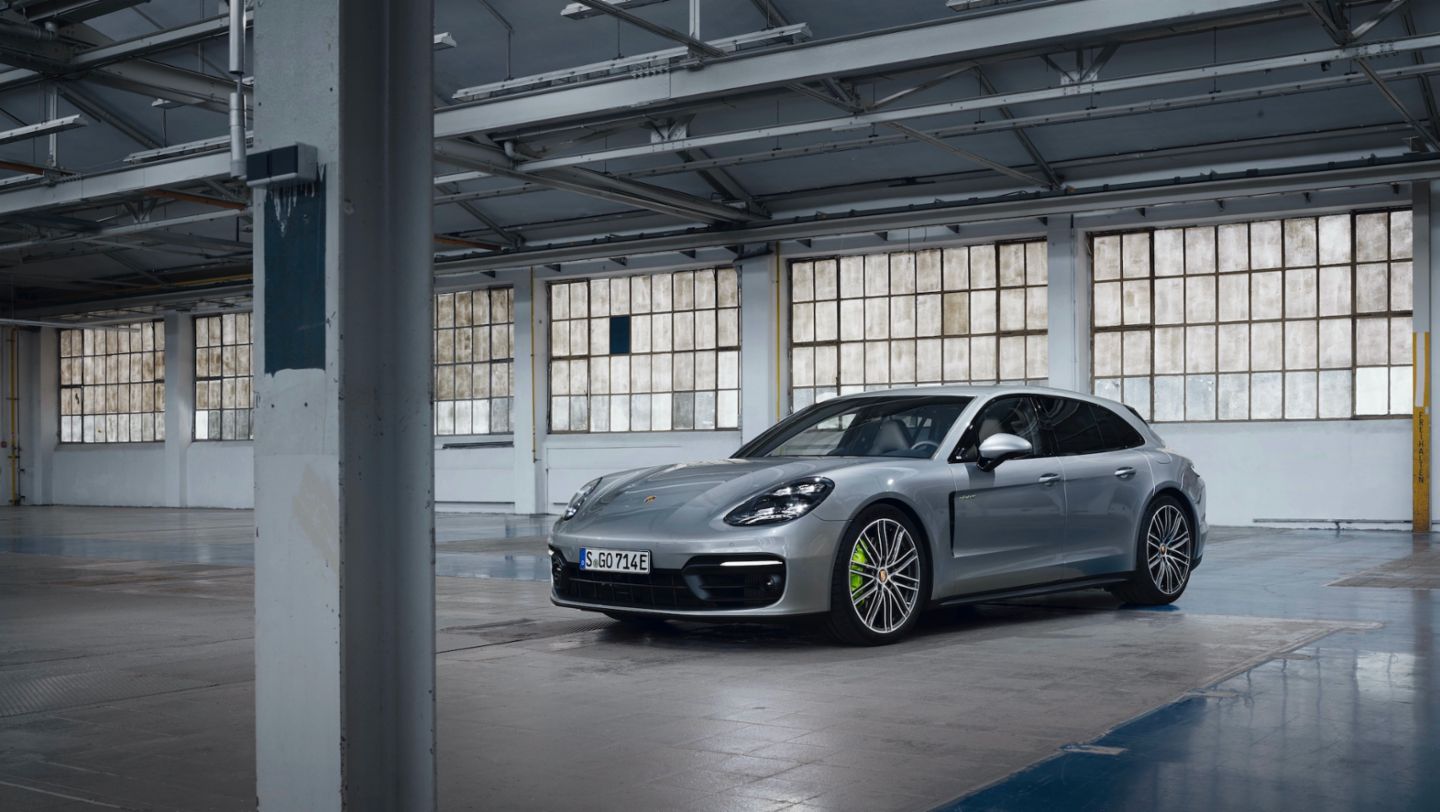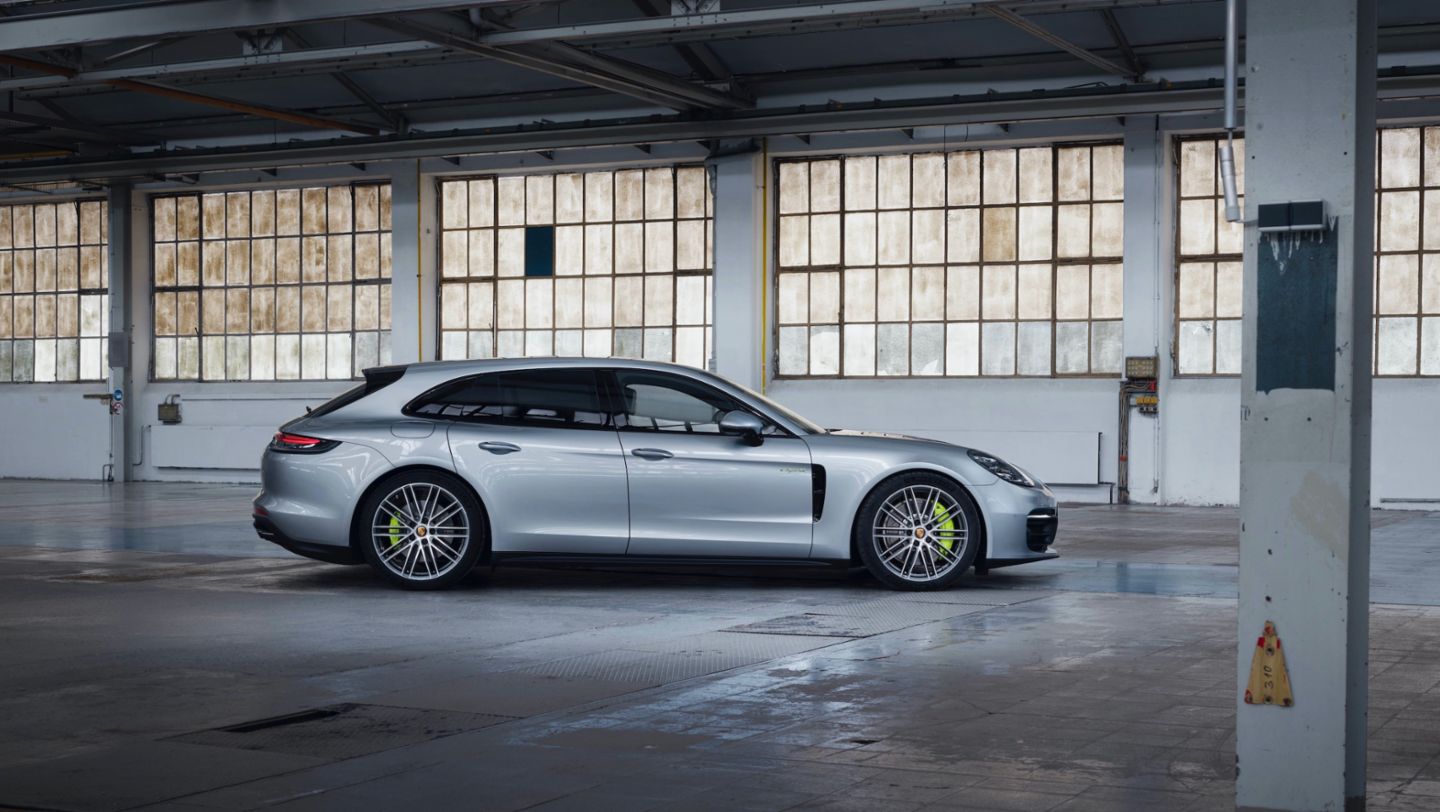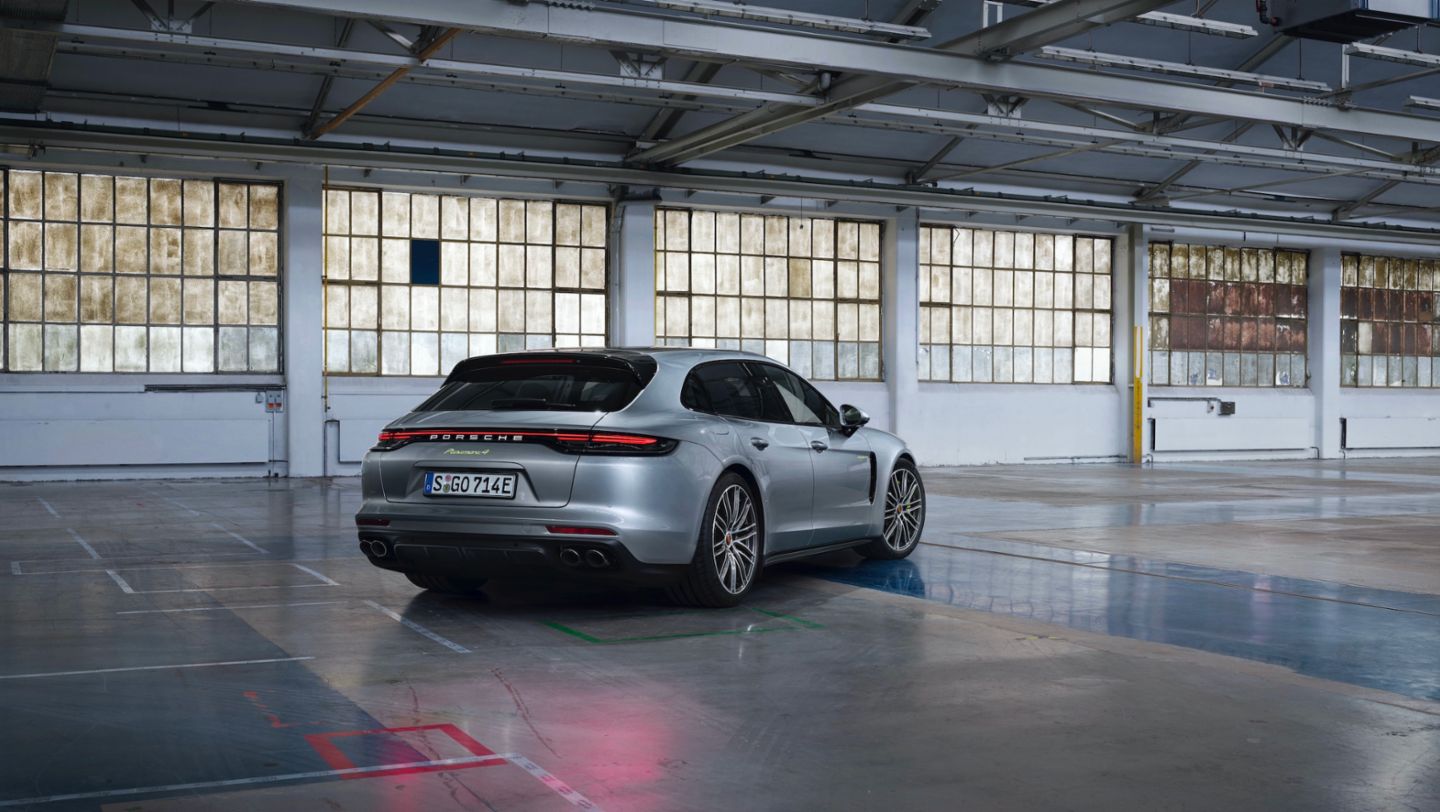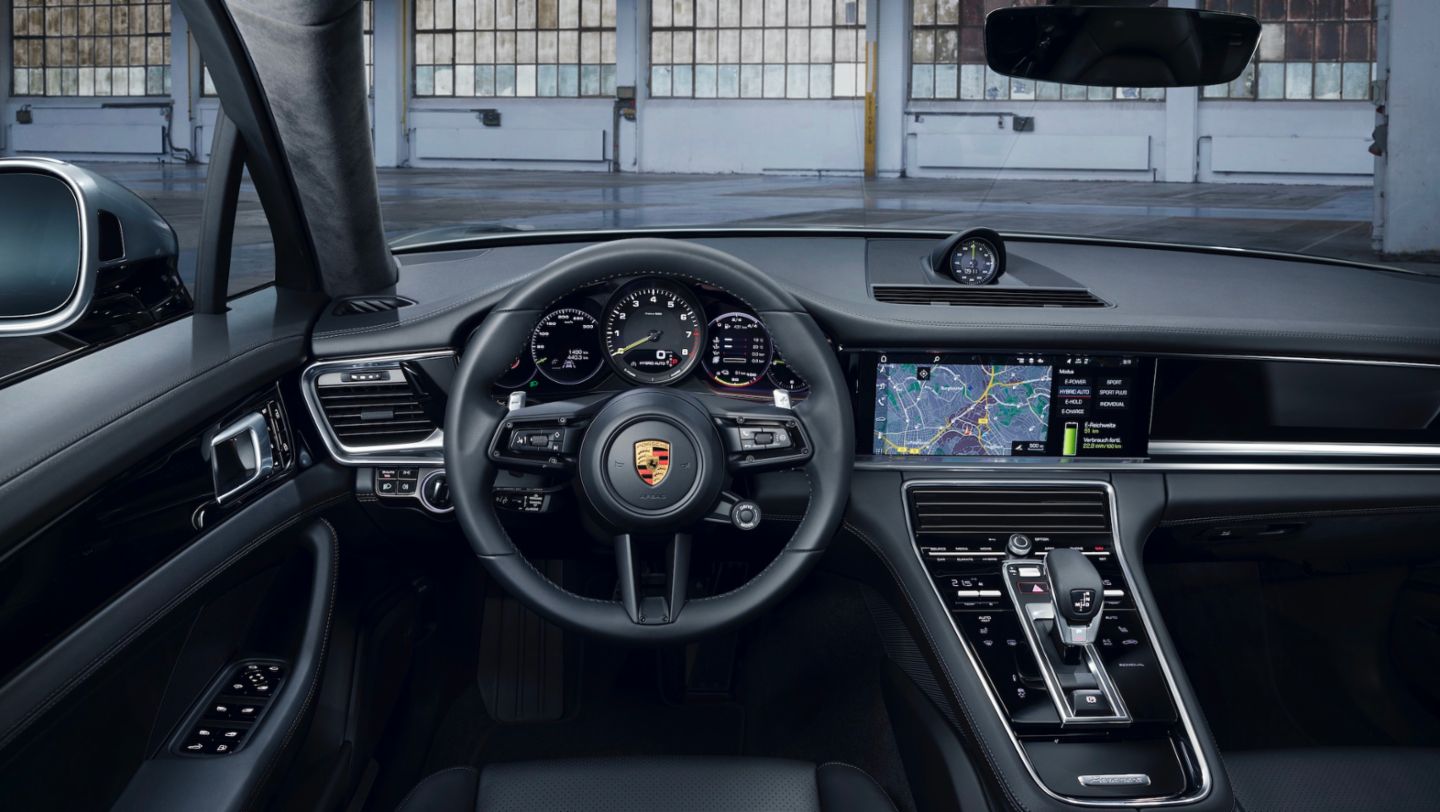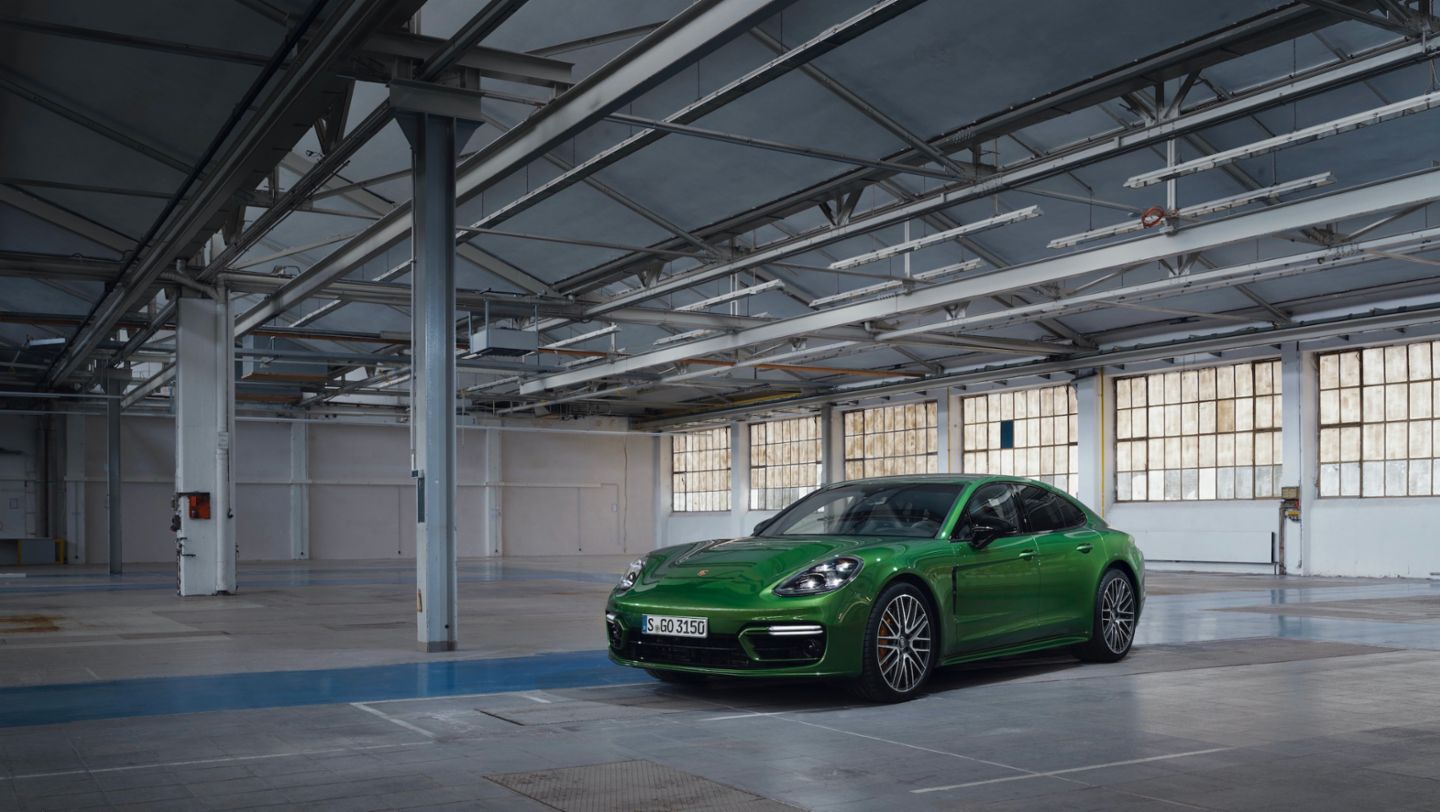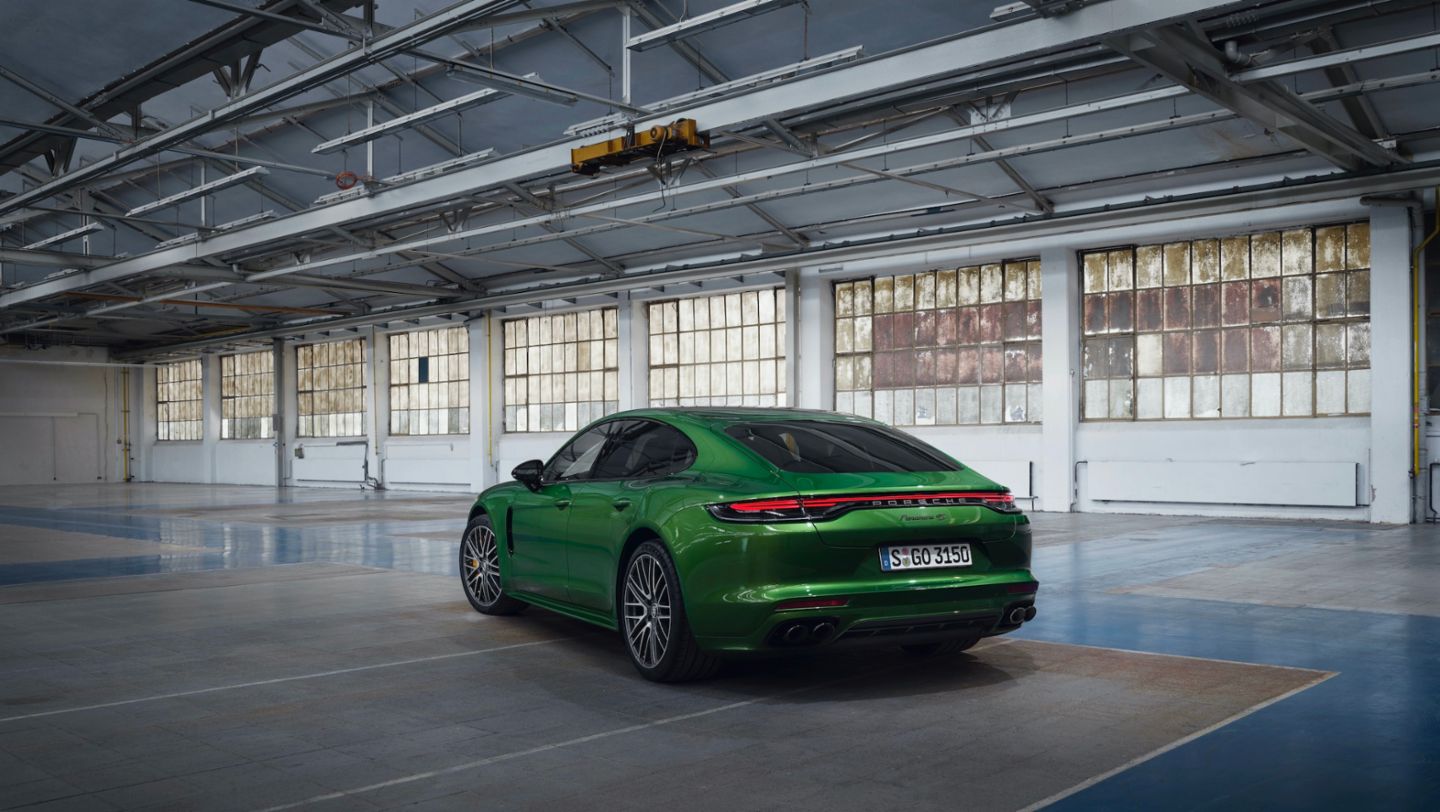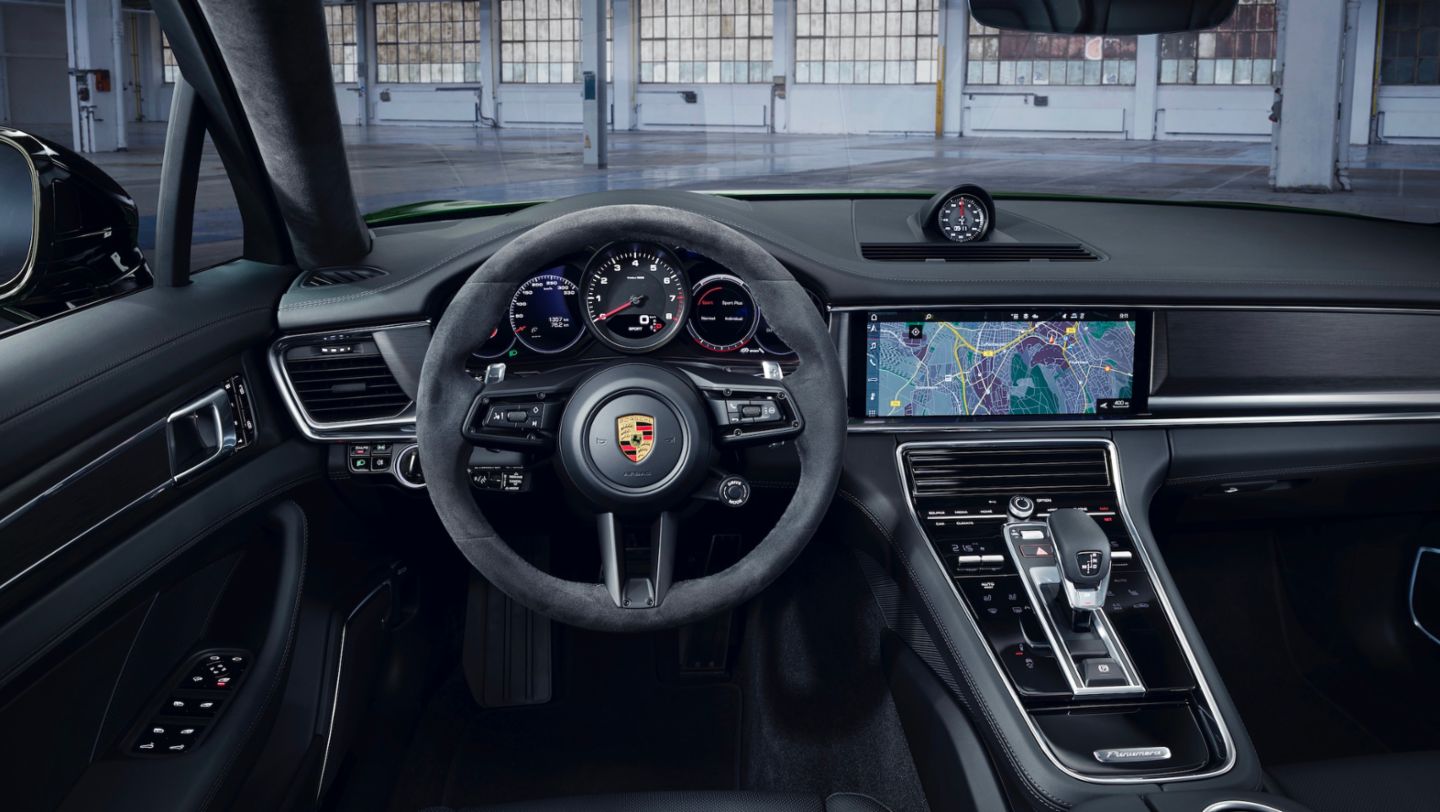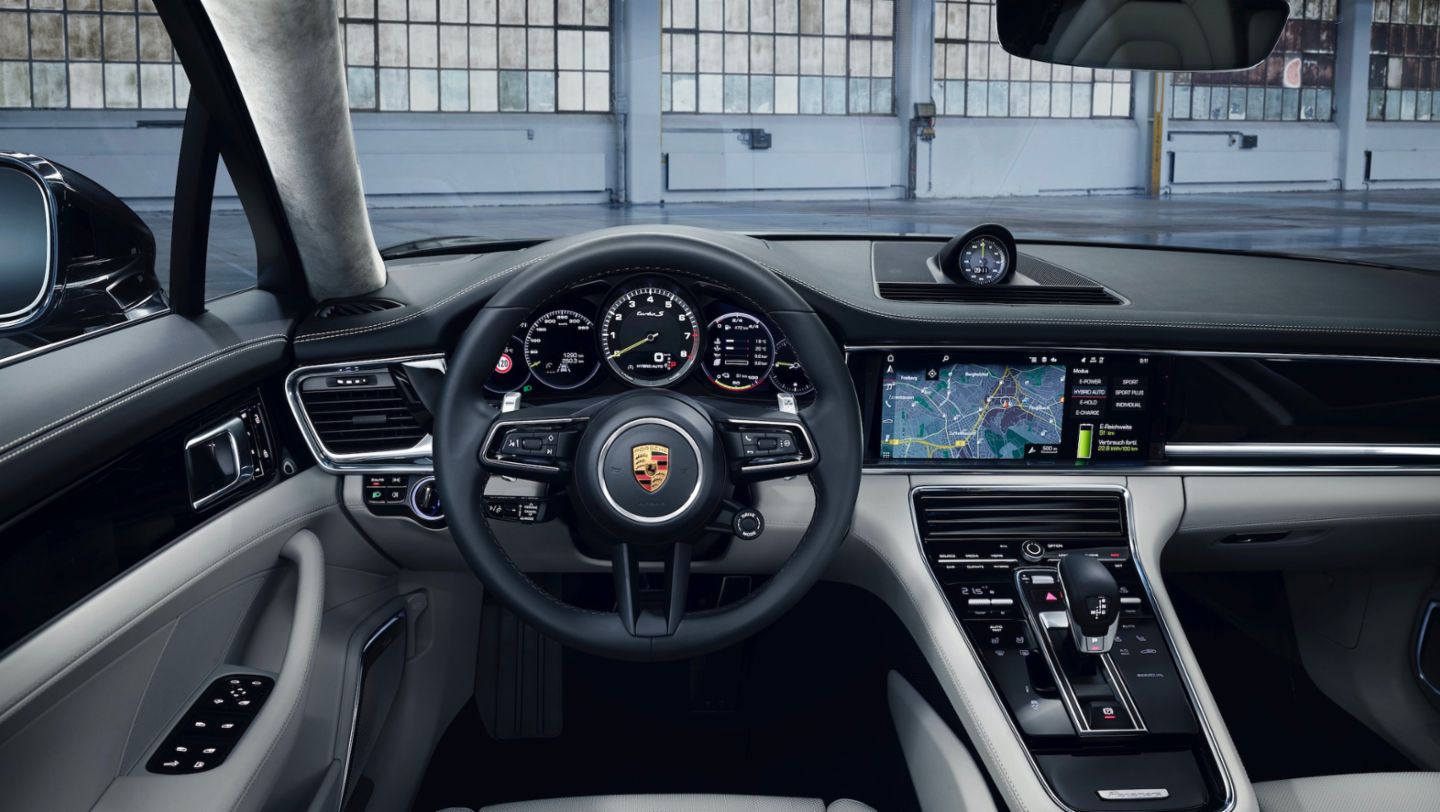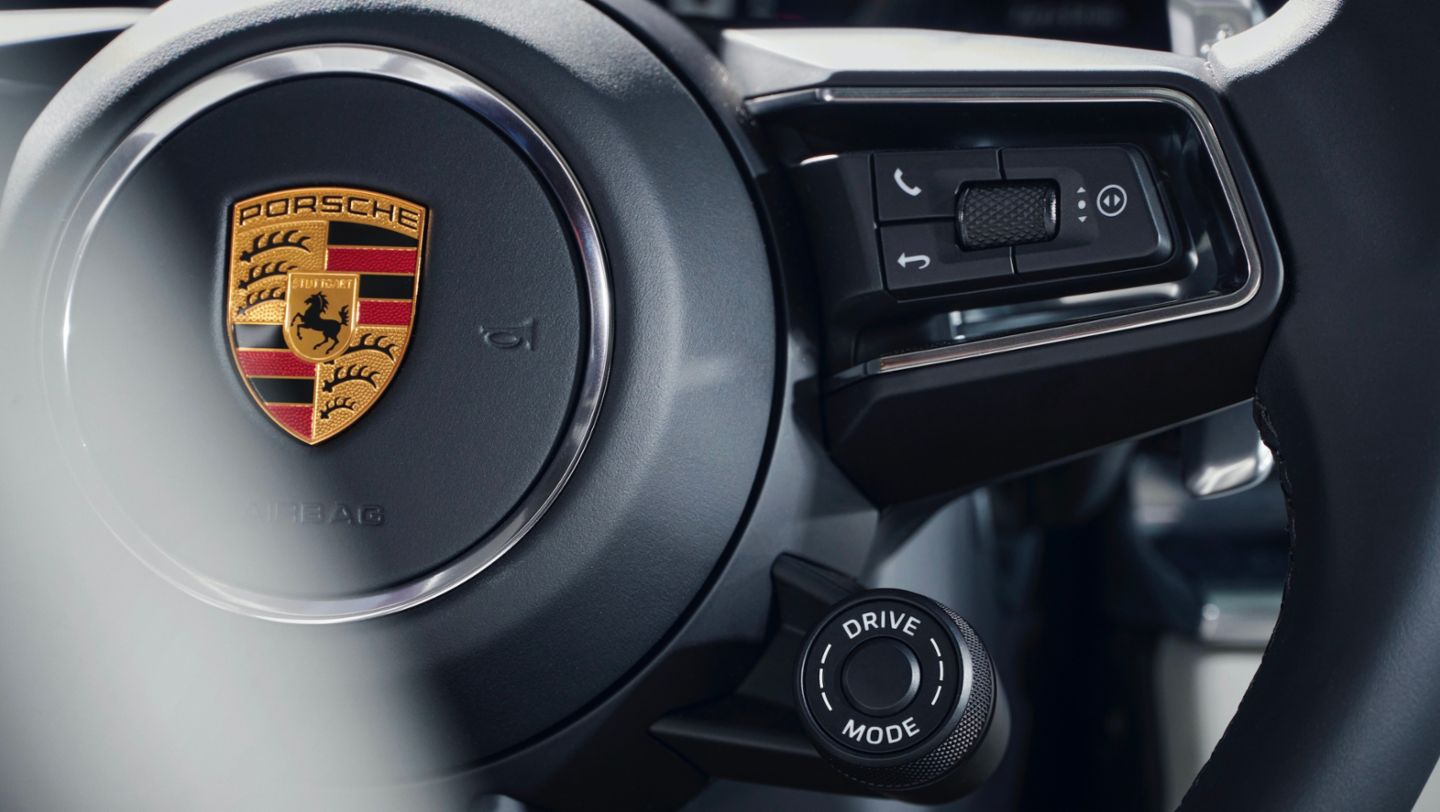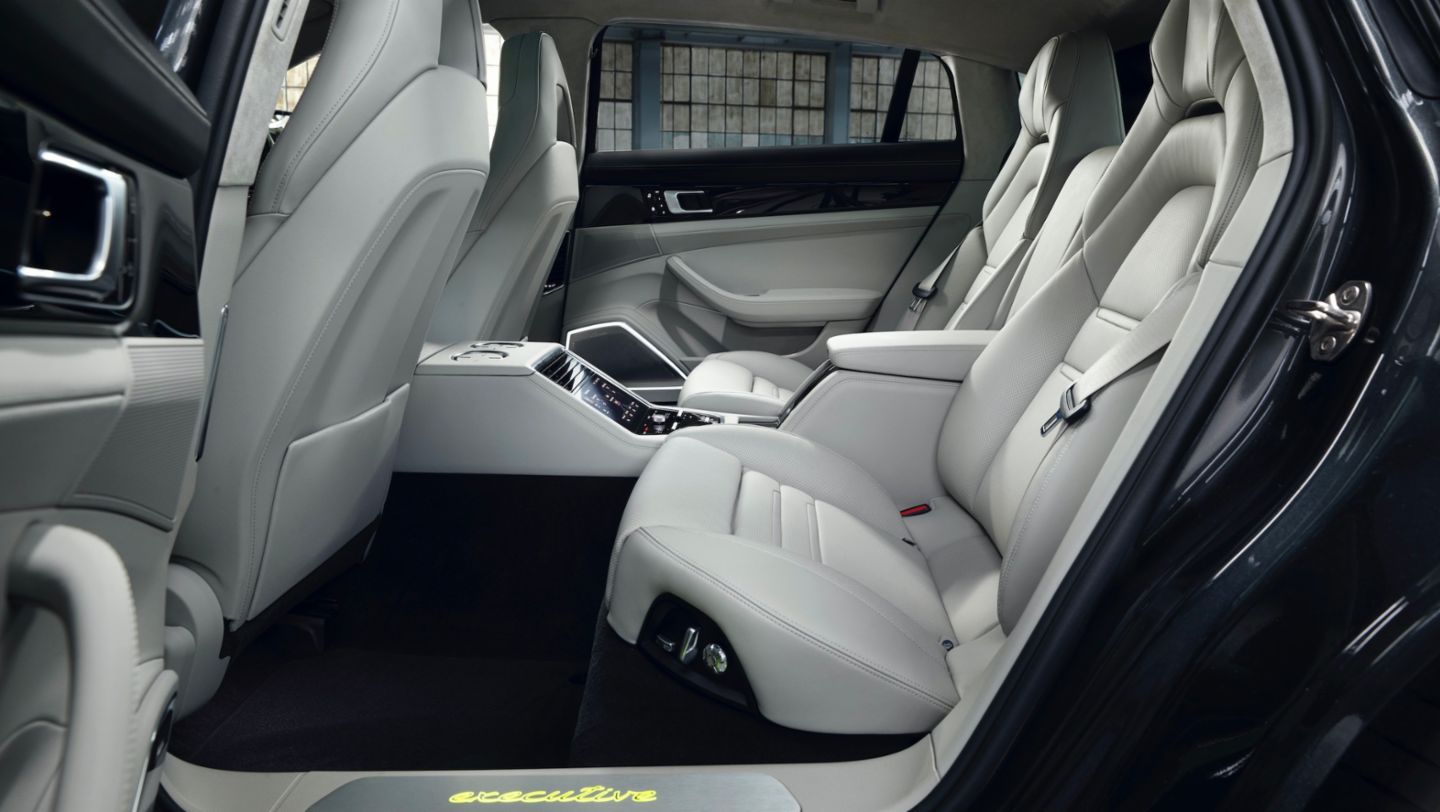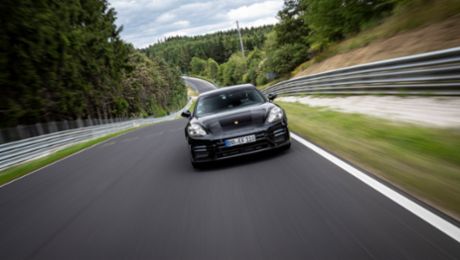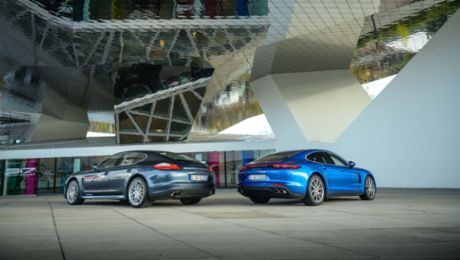The new Panamera Turbo S E-Hybrid is now the most powerful variant in the completely revamped product line, combining a 420 kW (571 PS; Panamera Turbo S E-Hybrid models: Fuel consumption combined 2.8 – 2.7 l/100 km; CO₂ emissions combined 63 – 62 g/km; electricity consumption combined 22.8 – 21.8 kWh/100 km (as of 10/2020)), four-litre biturbo V8 with a 100 kW (136 PS) electric motor. Its all-electric range has been increased by up to 30 per cent thanks to a new 17.9 kWh battery and optimised driving modes. This also applies to the new Panamera 4 E-Hybrid, where the electric motor is complemented as before by a 243 kW (330 PS; Panamera 4 E-Hybrid models: Fuel consumption combined 2.3 – 2.1 l/100 km; CO₂ emissions combined 51 – 47 g/km; electricity consumption combined 18.2 – 17.0 kWh/100 km (as of 10/2020)) 2.9-litre biturbo V6, resulting in a system power output of 340 kW (462 PS). The Panamera portfolio is rounded off by the 4S, which delivers 324 kW (440 PS; Panamera 4S models: Fuel consumption combined 9.2 – 8.8 l/100 km; CO₂ emissions combined 210 – 202 g/km (as of 10/2020)) and also benefits from all the optimised features of the latest model enhancement in terms of chassis, design, equipment and infotainment.
Hybrid trio with improved electric driving experience
Including the recently unveiled new Panamera 4S E-Hybrid, which boasts a system power output of 412 kW (560 PS; Panamera 4S E-Hybrid models: Fuel consumption combined 2.3 – 2.0 l/100 km; CO₂ emissions combined 53 – 47 g/km; electricity consumption combined 19.5 – 17.4 kWh/100 km (as of 10/2020)), Porsche is now offering three Panamera plug-in hybrid models for the first time – each in the three available body variants of sports saloon, Executive (long-wheelbase version) and Sport Turismo. Porsche is therefore systematically extending its E-Performance strategy.
At the heart of the drive architecture is the electric motor, which is integrated into the eight-speed dual-clutch transmission (PDK) and still produces a power output of 100 kW (136 PS) and maximum torque of 400 Nm. Together with the different combustion engines offered, this makes for outstanding driving performance. In combination with its standard Sport Chrono package, and powered by a four-litre V8 biturbo engine that now delivers 420 kW (571 PS) instead of 404 kW (550 PS), the new Panamera Turbo S E-Hybrid now completes the sprint from zero to 100 km/h in 3.2 seconds – 0.2 seconds faster than its predecessor. It reaches a top speed of 315 km/h, which represents an improvement of 5 km/h.
The Panamera 4 E-Hybrid takes just 4.4 seconds (-0.2 s) to reach 100 km/h from a standing start on its way to a top speed of up to 280 km/h (+2 km/h). The gross capacity of the high-voltage battery has been increased from 14.1 to 17.9 kWh, thanks to the use of optimised cells, and the driving modes have been adapted for even more efficient energy utilisation. The new Panamera Turbo S E-Hybrid has an all-electric range of up to 50 km according to WLTP EAER City (NEDC: up to 59 km), while the Panamera 4 E-Hybrid can be driven with zero local emissions for up to 56 km according to WLTP EAER City (NEDC: up to 64 km).
The Porsche plug-in hybrid models are preferably charged at home – either via a standard domestic outlet or a power socket. A model-specific charging capacity of up to 7.2 kW is possible with the standard Porsche Mobile Charger. Charging is also possible at public charging points using a Mode 3 cable.
Visually sharpened with even better connectivity
The new Panamera 4S, which is still powered by a 324 kW/440 PS, 2.9-litre V6 biturbo engine, achieves the 0-100 km/h in 4.1 seconds (-0.1 s) with the Sport Chrono package. It has a top speed of 295 km/h (+6 km/h). The 4S benefits from all the optimised features of the latest model update, and is equipped with the previously optional Sport Design front end as standard. This features striking air intake grilles and large side cooling air openings as well as a single-bar front light layout.
The newly designed front end of the Panamera Turbo S E-Hybrid is differentiated by its dual C-shaped Turbo front light modules as well as its larger side air intakes. The revamped light bar at the rear now runs seamlessly over the luggage compartment lid with an adapted contour. The options available include darkened Exclusive Design tail light modules with dynamic Coming/Leaving Home animation, three new 20- and 21-inch wheels and two new exterior colours (Cherry Metallic and Truffle Brown Metallic).
The Porsche Communication Management (PCM) features higher display resolution and includes additional digital functions and services such as the improved Voice Pilot online voice control, Risk Radar for road sign and hazard information, wireless Apple® CarPlay and many other Connect services.
More performance, more comfort
The chassis and control systems have been tuned for sportiness and comfort in all new Panamera models. In some cases, a completely new control strategy has been implemented. A new generation of steering control system and new tyres ensure improved lateral dynamics and greater precision. The flagship Panamera Turbo S E-Hybrid comes as standard with all currently available chassis and control systems such as the Porsche Dynamic Chassis Control Sport (PDCC Sport) electric roll stabilisation system, which includes Porsche Torque Vectoring Plus (PTV Plus), rear axle steering with Power Steering Plus as well as the Porsche Ceramic Composite Brake (PCCB) system.
Info
The new Porsche Panamera models are available to order now and will be in dealerships from the beginning of December.
